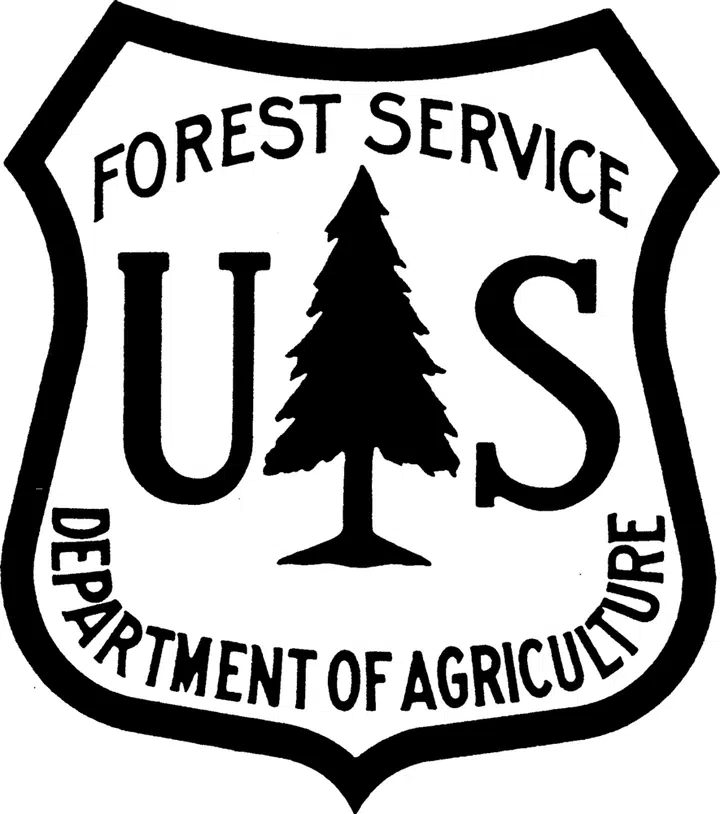
Beech Knoll is an untapped area of the Helen S. Layer Rhododendron Garden. It is a quiet retreat which lends itself to meditation.
Soon after my arrival at HF&G, my experience with mowing on this site led me to seek out grass alternatives and no-mow options for shade. After having a positive conversation with the Director of Horticulture, Annie Rzepka, about my concerns of tree damage and time wasted to maintain the sparsely growing grass and weeds, I presented my final plan and “Sedge Hollow” became a reality! “Sedge Hollow” is my affectionate and unofficial name given to the newly planted south side of Beech Knoll.
The trees desperately needed protection if they were going to thrive, and my design and garden maintenance background drove me to do several things – improve the overall feel and aesthetics of this quiet hilltop, and encourage guests to exit the main path and slow their pace. I also wanted to demonstrate to homeowners that there are great native lawn alternatives for shade that are complementary to the surrounding landscape and, in the case of HF&G, add to our living collection in a thoughtful, sustainable way.
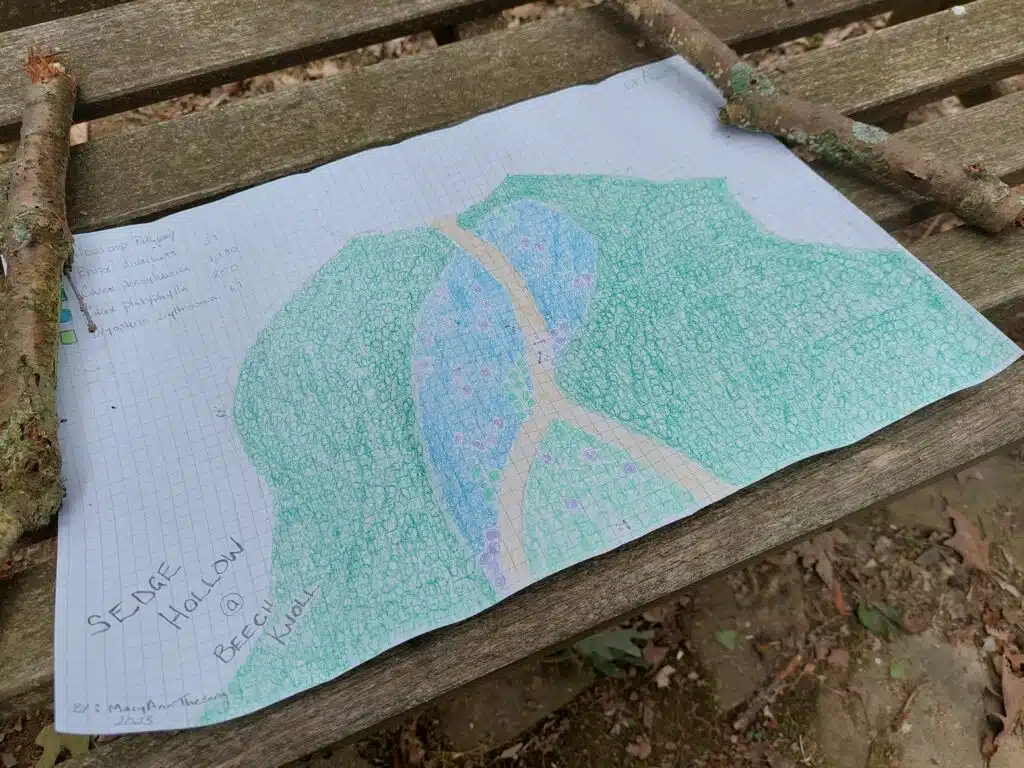
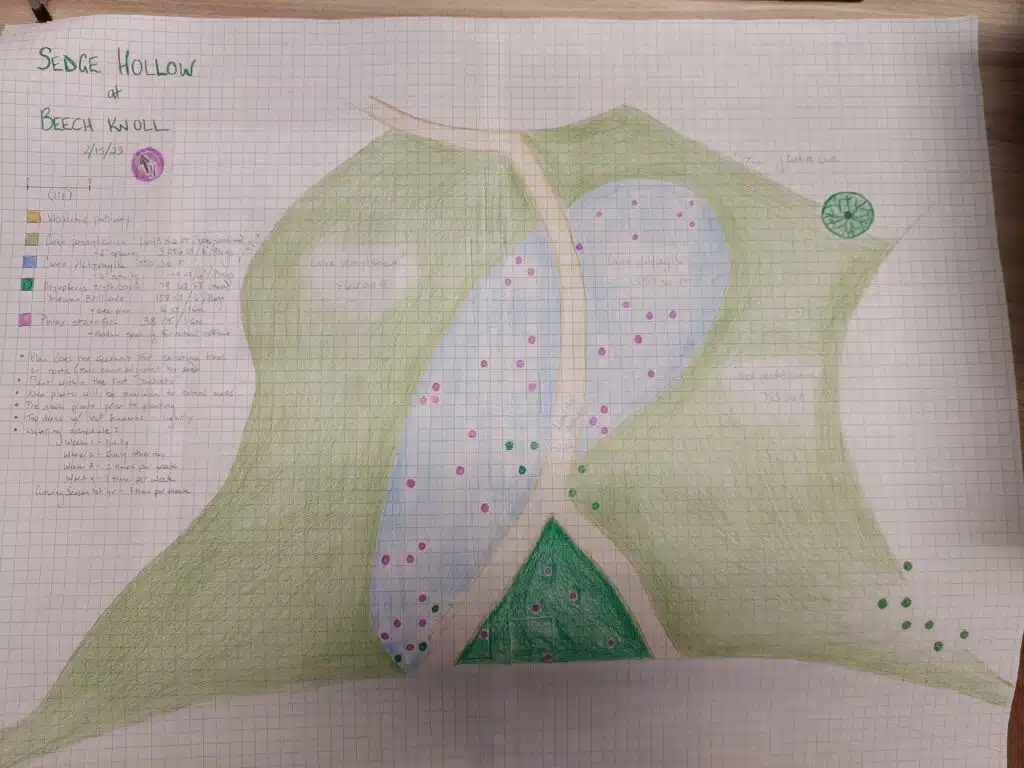
Despite having a patio with three benches, the space was unassuming and, dare I say, downright unsightly. It was clear from the onset why guests were not inspired to linger, not even for a quick rest. The question had to be asked – why are we putting effort into maintaining sparsely growing grass, while damaging trees in the process, that no one wants to use? That didn’t make any sense to me.
Full disclaimer, I’m not a fan of turf to begin with, and poorly growing turf is even worse than the lush green lawn growing on the north side of Beech Knoll. Although, that makes me cringe as well. We have a unique opportunity here at Holden Forests and Gardens to re-think sustainable, beneficial and beautiful lawn alternatives – especially in shady sites where the cost to maintain the grass planted in shade outweighs the overall aesthetics and benefits.
I was determined to approach this project as organically as possible and, as sparse as the grass and weeds were, it was easy to do. I opted to shave the surface, weakening the plants by removing the top growth using an edger/trimmer. I started early in the growing season and shaved it three times before adding wood chips and leaf hummus to the entire planting area. Due to the amount of tree roots, we needed good base material to plant into.
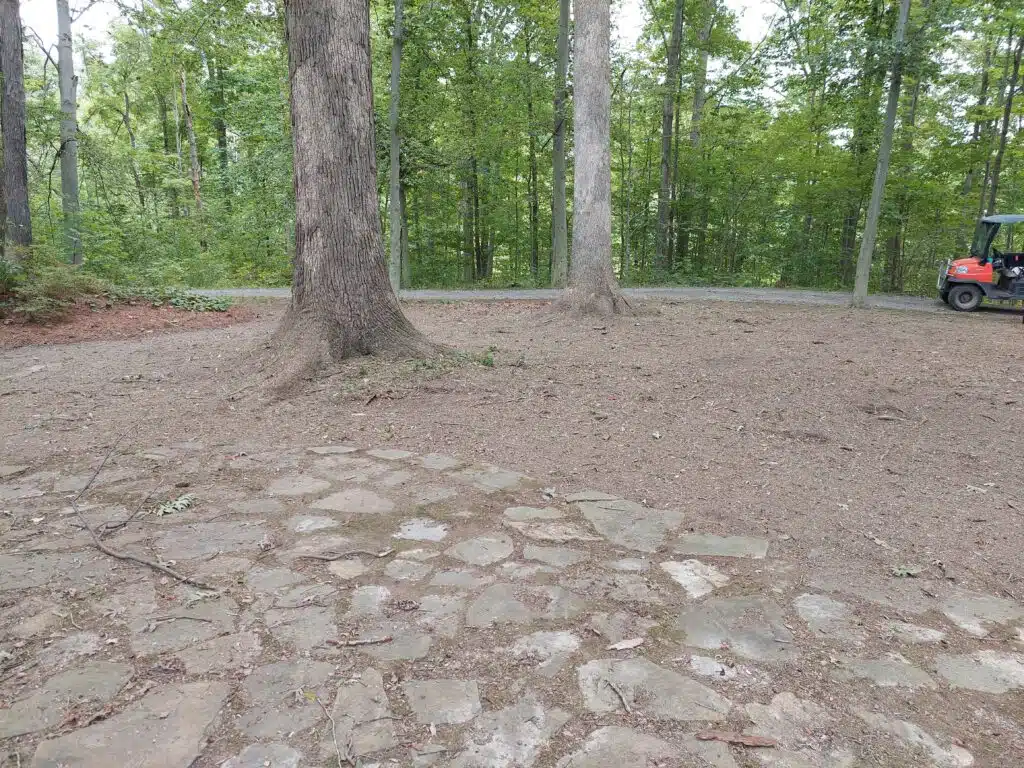
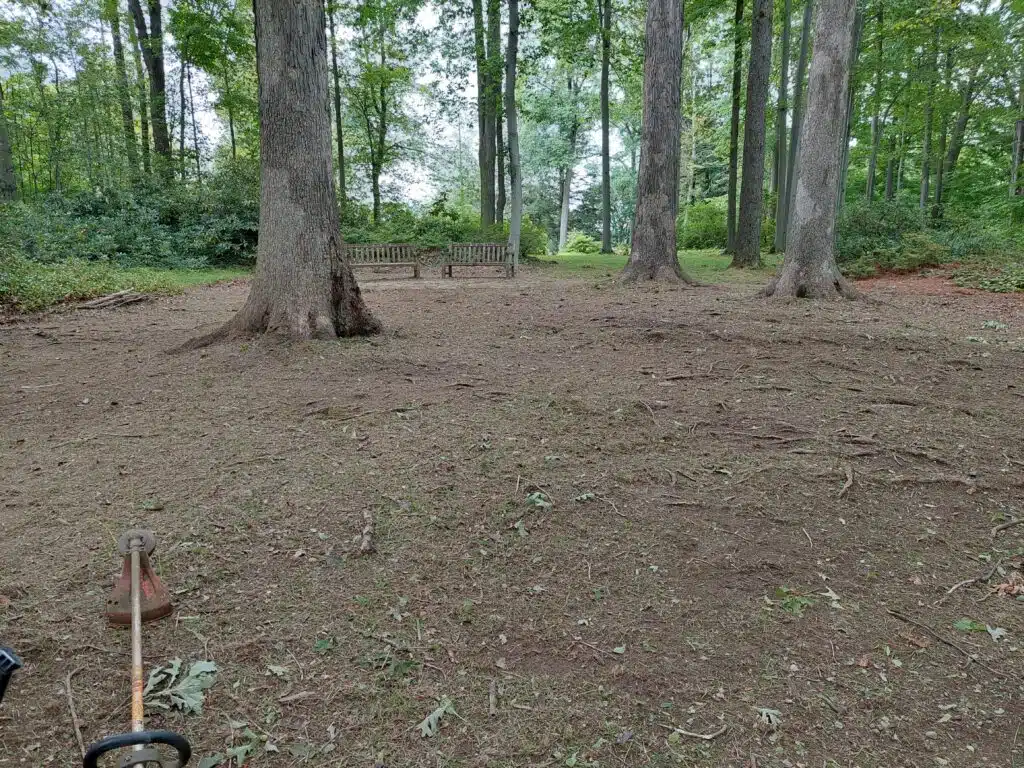
Carex pensylvanica (Pennsylvania sedge), Carex plantaginea (seersucker sedge) and Phlox stolonifera (creeping phlox) were all chosen to support biodiversity. They provide pollen and nectar as well as nesting material for butterflies, moths and native bees. Birds often seek out grasses for nesting material and will also feed on the seed heads. All around, it’s a win/win. Hopefully, you are inspired to rethink an area of your own turf where you, too, can provide habitat and seasonal interest.
Although it was tedious to plant Carex pensylvanica plugs and 1-gallon Dryopteris erythrosora ‘Autumn Brilliance’ (autumn fern) in this area, the results are encouraging. At the end of the season, Carex runners were evident.
Once the planned “tear drop” was determined, I wanted to progress the project forward, and, since funds were limited, opted to sow Carex plantaginea (seersucker sedge) seed instead of using plugs. Time will tell if this was the correct decision or not, but I remain hopeful.
Carex pensylvanica goes by several names, one of which is “oak sedge”, and once established, this species will thrive under oak trees. Autumn ferns can be drought tolerant, and they add lushness to the overall feel of the space. Despite being non-native, autumn ferns were chosen due to their long seasonal interest and to block the view of the roadway from the seating area, so that you experience the full expanse of the new plantings, and the extended view to Hourglass Pond without having an interruption of sight lines.

Phlox stolonifera was also incorporated into this project and was planted amongst the sedges and ferns. Unfortunately, there has been attrition due to animal activity (and disease) late summer into fall. Only time will tell, as we approach the next growing season, whether we will see some evidence of plants and cuttings. My hope is to see some regeneration – if not, then I will propose a Phlox stolonifera cultivar which seems to out-perform the straight species and is beneficial to insects, as well.
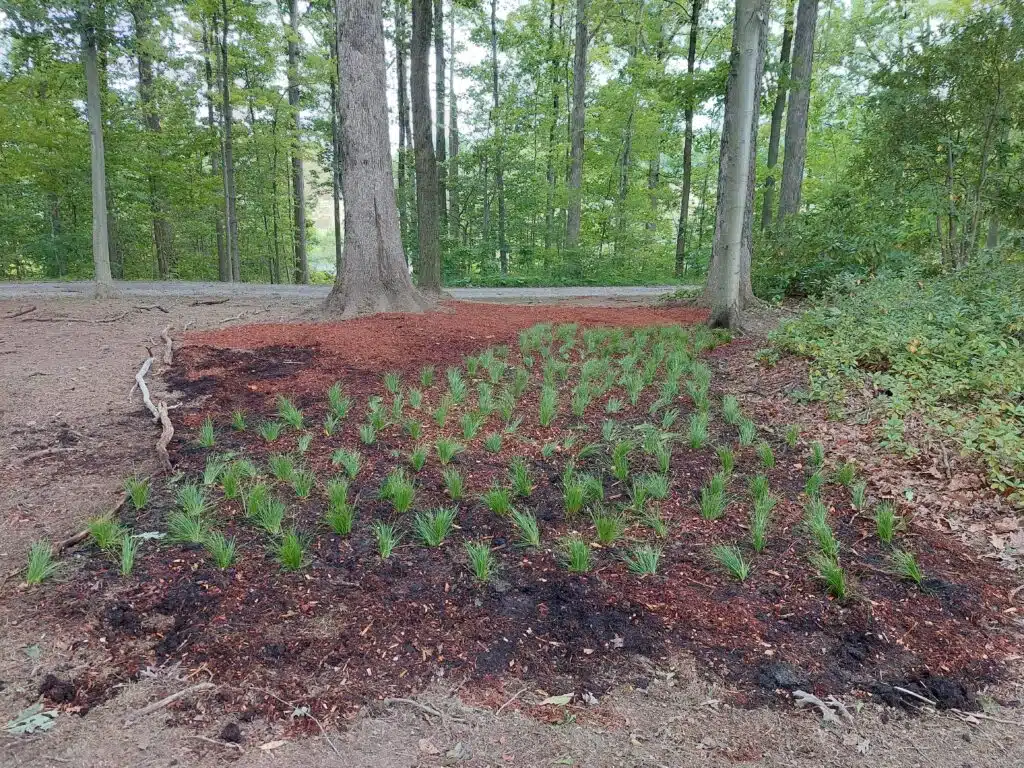
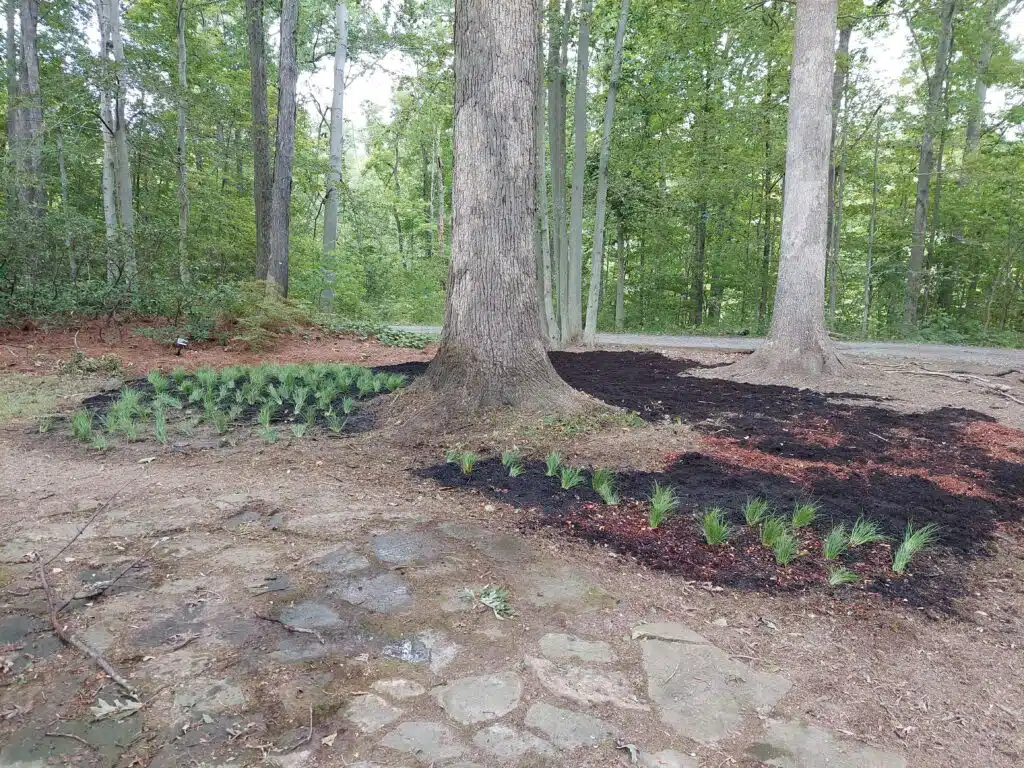
Future maintenance will include necessary weeding until plants expand their footprint, along with periodic rejuvenation of plants by cutting Carex back to no less than one third their height in March or April. Debris will be left in place (a “chop n’ drop” method used in garden maintenance) for nesting material and to compost into the surrounding soil. Some fallen leaves will also remain to break down and feed the entire planting area, including trees.
Once established, I expect the entire site to be much less maintenance than the weekly to bi-weekly mowing which previously occurred. What better way to have a self-sustaining, highly impactful planting for guests to enjoy that homeowners can replicate! Next time you are at HF&G, bring a good book, slow down and enjoy the view!
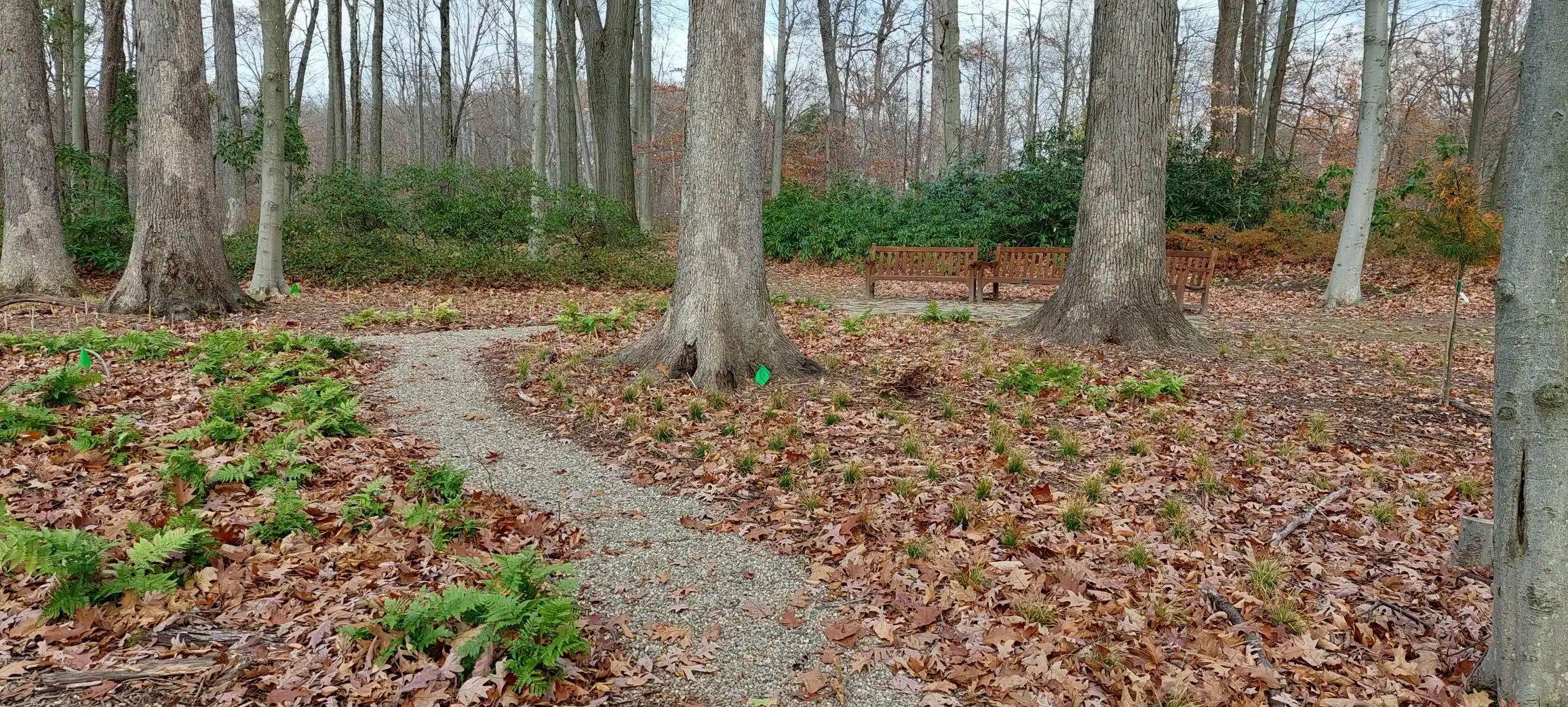
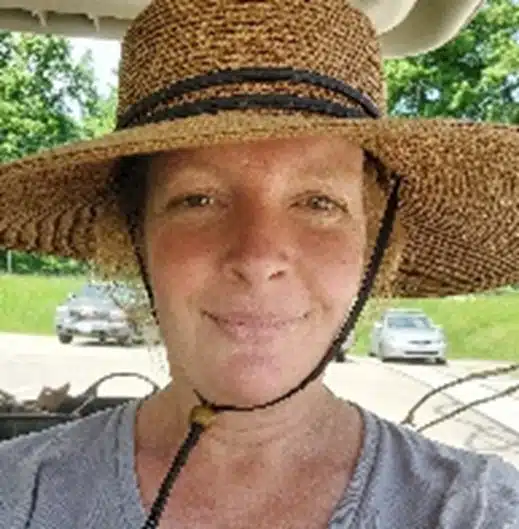
MaryAnn Thesing
Horticulturist
MaryAnn Thesing is the Horticulturist for 21.25 acres of the Helen S. Layer Rhododendron Garden, working tirelessly to elevate garden aesthetics, while encouraging guests to slow down and reconnect with nature in a meaningful way that is beneficial to better health and vitality. MaryAnn can often be found in the Layer Garden, diligently working to rejuvenate this space, working with volunteers, interns and gardeners to help encourage more visitation.










